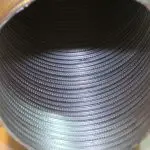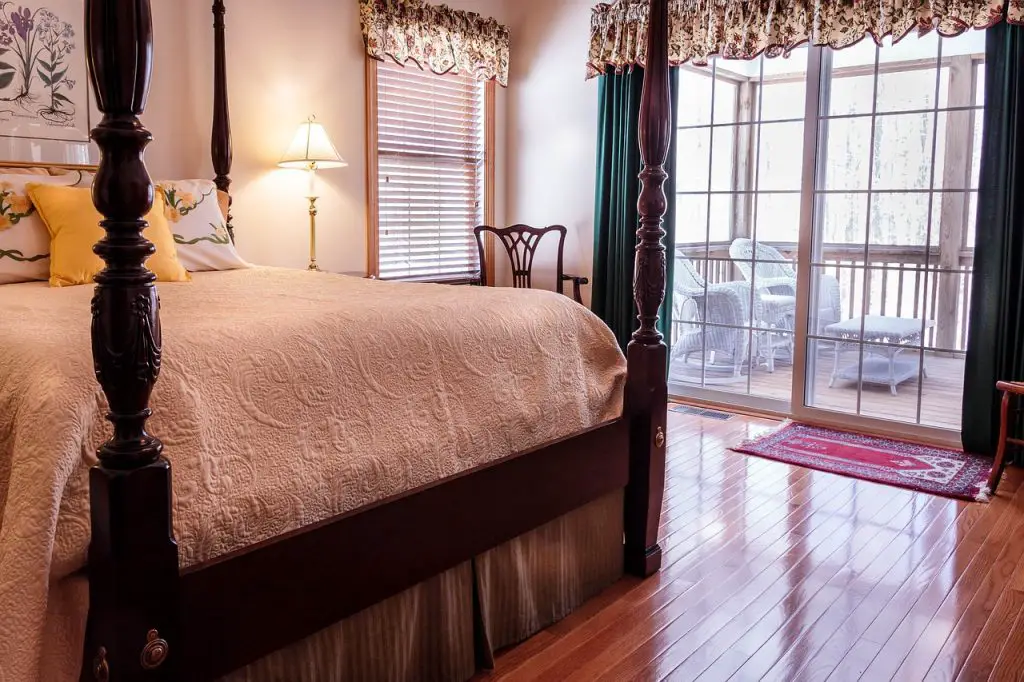
Soundproofing sliding doors is challenging. The process can be completely different from one sliding door to another.
There several types of sliding doors. Sliding glass doors, pocket doors, and barn doors may look the same. But the truth is they differ in many ways.
Soundproofing one of these sliding doors may require specific techniques and materials. But there’s nothing to worry about.
There are doable and easy ways you can implement to achieve your soundproofing goal. In this guide, you will learn how to soundproof sliding glass doors, sliding pocket doors, and sliding barn doors.
Therefore, this guide boils down into three main topics:
Soundproofing Sliding Glass Door
Soundproofing Sliding Barn Door
Soundproofing Sliding Pocket Door
Each topic comes with detailed instructions that you can follow to do it yourself. So without further ado, let’s dive in.
Table of Contents
How to Soundproof a Sliding Glass Door?
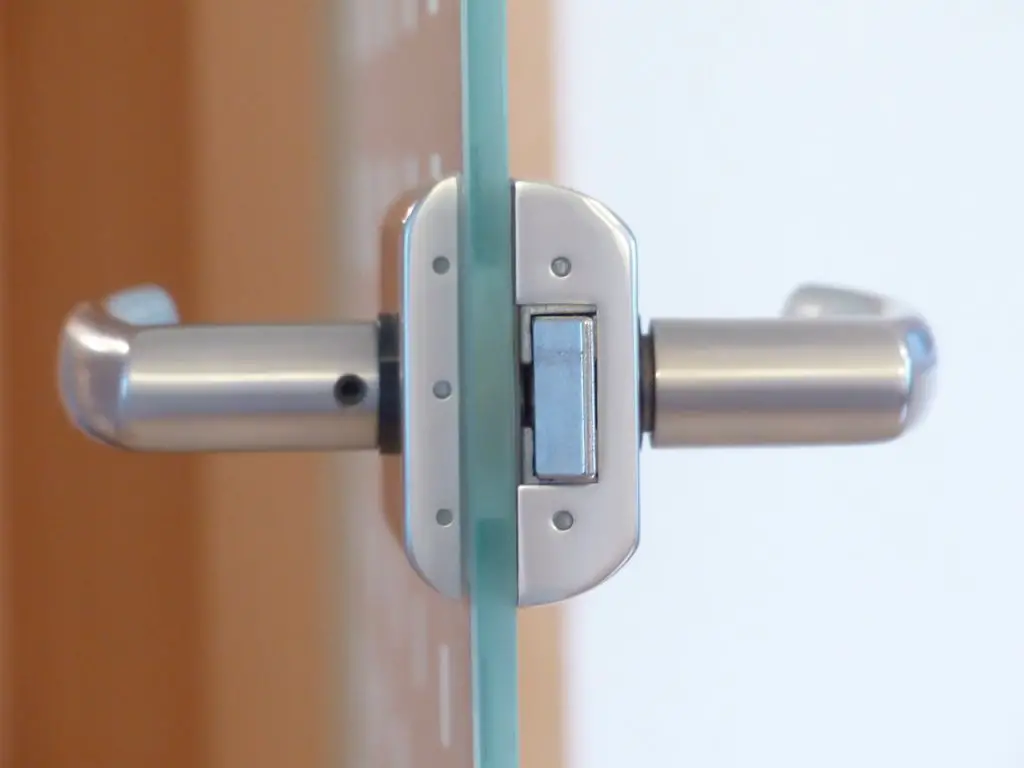
Over the years, this is one of the questions I get from my readers. There is a pretty good reason why this query shows up over and over again.
The reason stems from the fact that soundproofing a glass door is more challenging and difficult compared to other types of sliding doors.
This is because working with glass doors may come with two main problems. The first problem stems from the reality that glass doors are thin and fragile. If you have a thinner structure to soundproof, that means you need special soundproofing material to effectively block the noise.
Putting more soundproofing materials to the thin and fragile glass door creates another problem. The thick soundproofing materials will only add to the weight of the sliding glass door.
Because glass is a fragile material, it may not be able to hold the weight and therefore may break into pieces.
Fortunately, there are soundproofing techniques you can use to soundproof your sliding glass door:
1. Use a Soundproofing Curtain
In my opinion, this is one of the easiest ways to soundproof a sliding glass door. These types of curtains do not only block sound from the outside but also act as thermal insulation. These curtains regulate temperature both in summer and winter by blocking the outside temperature.
Soundproof curtains are thicker than regular curtains you use at home. But the application is the same as the regular curtains. You need a durable curtain rod to hold the soundproof curtain above the sliding glass door.
When applying this technique, it is important to make sure that the curtain covers the whole glass door. If you decide to go on this route, it is better to choose a wider curtain. Bigger curtains are more effective in soundproofing both windows and doors. The wider it is the more pleats you can make and the thicker it becomes.
The perfect soundproofing curtain for the sliding glass door is not only thick but must also have the color that complements the interior design of the house. Therefore, there are two main considerations as far as choosing the soundproofing curtain for the glass sliding door goes – weight and color.
Thick curtains are usually heavy. But not all of them have the color that you want. Thankfully, there are great and most effective soundproofing curtains you can choose from Amazon. Using one of these curtains ensures your success in your soundproofing project.
Since using thick curtains requires a durable and strong curtain rod, I also include some of the rods you can use. You can buy these curtain rods on Amazon. These rods do not only secure the curtains but also provide easiness during the installation process.
The suggested thick curtains are wide and long enough to cover the whole glass sliding door. These curtains are 42-inch wide and 84-inch long for maximum soundproofing results.
The curtain rod can be improvised. This means that you can use any type of steel rod to hang the thick curtain. As long as the rod is able to hold the curtain above the door, you are good to go.
If you want a more successful result, you can use two thick curtains and install them together on the same glass sliding door. All you need is a double curtain rod (click here to see the product on Amazon).
2. Use a Fiberglass Blanket
If you are living in a noisy apartment, or in a noisy urban area, noise can be your worst enemy all day and night long. You don’t only hear noise from people talking and singing nearby but also impact sound.
Impact sounds are those coming from washing machines, drum bass, and other sources of vibrations.
If you want to get rid of this noise, then a fiberglass blanket can be your better option. The reason I recommend this is that fiberglass blankets are designed for soundproofing vehicles, walls, and doors.
Needless to say that these materials are doing a very good job in reducing if not eliminating the disturbing noise and block it from entering your private living space.
An excellent example of this is the Singer Fiberglass Blanket (click here to see the product on Amazon). This is one of the most popular fiberglass blankets being used not only for soundproofing glass doors but also for vehicles.
This soundproofing material has a perfect size (4 feet wide and 8 feet high) to cover the whole sliding glass door. You can easily install this blanket using a curtain rod or hook with an anchor (click here to see an example hook on Amazon).
However, fiberglass blankets are not as good looking as the soundproof curtains mentioned above. The primary reason, I believe, is that these materials are not designed for aesthetic enhancement.
In my case, during a noisy night, I install the fiberglass blanket on my sliding glass door and take it off during the day. During bedtime, I don’t need a decorative effect of a blanket on my door. What I need is something that keeps my bed space free from the annoying noise.
Thanks to the hooks I am using. They allow me to install and remove the blanket easily and quickly.
3. Use a Moving Blanket
If you don’t have access to soundproof curtains and fiberglass blankets, you can use any thick blanket to hang on your sliding glass door. One good example of blanket of this type is the moving blanket.
A moving blanket is primarily used for covering furniture and other valuable belongings with the wooden or delicate surfaces to avoid having them scratched during the transport.
Unlike the soundproofing curtain and fiberglass blanket, the moving blanket is not designed for soundproofing purposes. But the fact that these materials are made of polyester mesh and cotton, they can do a pretty good job in blocking the sound.
For a quick soundproofing solution, you can definitely try this material. Moving blankets are thick and heavy enough to lessen the penetrating noise from the outside.
Like the fiberglass blanket, the moving blanket is not designed to boost the aesthetic value of the space. So do not expect a beautiful finish. Just remember that the main goal of using this material is to somehow block the unwanted noise.
There are many types of blankets out there you can use for your project. But whatever it is that you choose, make sure that it is heavy, thick, and wide enough to effectively soundproof the sliding glass door.
In terms of choosing the best moving blanket, here is my recommended one (click here to see it on Amazon). This is one of the heaviest moving blankets you can buy.
4. Use a Laminated Glass Sliding Door
If using the recommended materials mentioned above did not work as you expect, then the ultimate way to block the disturbing noise is by replacing your door with a Laminated Glass Sliding Door.
This type of sliding door is not like any regular glass sliding doors. The laminated glass sliding door is durable and hard to break. This will not only help reduce the noise but also add to the protection of the house.
Without a question, if you are looking for door replacement, the laminated glass sliding door is the one I recommend. The only reason I see why many people don’t use this door is its price.
Laminated glass sliding doors are more expensive than any soundproofing materials I only mentioned. The price varies from $500 to $1000. The price depends on the size of the door as well as its manufacturer.
Aside from price, you also need professionals to correctly install the door. With this price range, you don’t want to make any installation mistakes. So you need an additional amount for installation fees.
But if you have a budget and you really want to get rid of those disturbing noises, this door can be your best option.
5. Seal All the Gaps on the Sliding Glass Door
If you don’t want to buy the materials mentioned above, there is another way to somehow reduce the noise from the outside. You do it by sealing all the gaps on the door. Those gaps are usually found between the door and the door frame.
The first thing you can do is to find the gaps and then seal them. The effective material to do it is the Weatherstripping Tape (click here to see on Amazon). This material is trusted in soundproofing sliding doors and in other soundproofing projects.
Another additional material to boost your success in soundproofing a glass sliding door is the door sweep. This material seals the space at the bottom of the door where the sound could pass through.
There are many types of door sweeps you choose from. But what I recommend is the Silicon Door Sweep (click here to see this product on Amazon). This material is perfect especially if you have a limited budget.
This door sweep comes with an adhesive on one side makes it easier than other brands to stick to the bottom of the door. You don’t need someone to help you install it. You can do it alone.
On Soundproofing Sliding Glass Door
Soundproofing sliding doors especially sliding glass door can be a huge challenge if you don’t know what you’re doing. But there is nothing really complicated if you really want to eliminate the disturbing noise.
One of the best options is using the soundproofing curtains. For louder noise, you can use the fiberglass blanket.
However, if any soundproofing materials are not available, you can instead seal all the gaps on the door to reduce the entering noise.
But if you have enough budget, you can go with the ultimate solution – replace your thin glass sliding door with the laminated glass door. This can be the best option as far as soundproofing sliding glass door goes.
How to Soundproof a Sliding Barn Door?
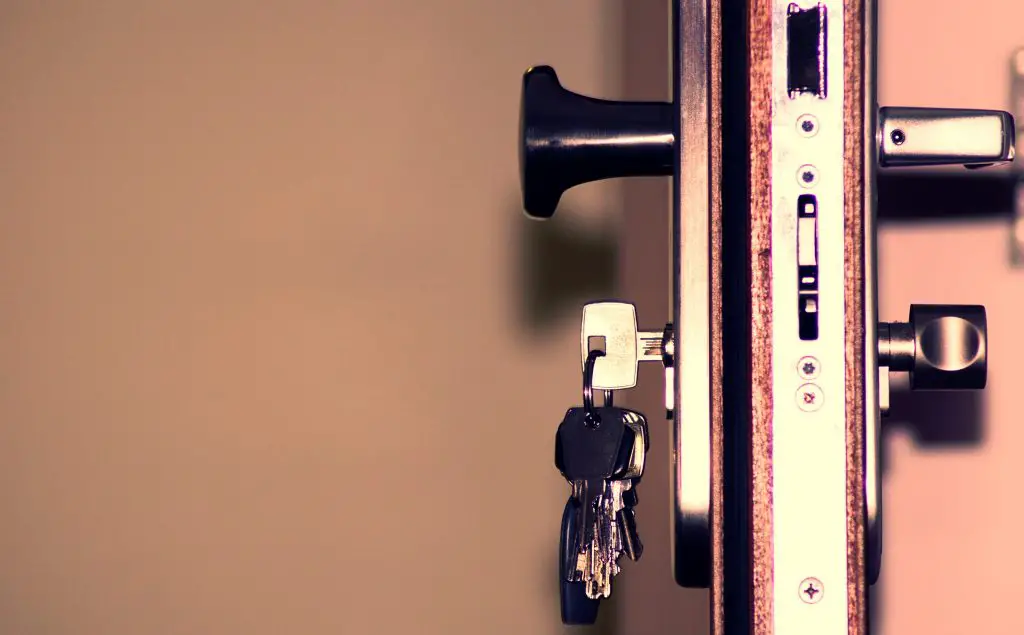
A barn door is a type of door that is usually made of wood. It looks nice and it is pretty durable. But one of the common complains I get over and over again about this door is its inability to block sound.
Due to its structure, a barn door allows the sound to travel back and forth. If getting enough sleep is your top priority, this is a huge problem.
Soundproofing a sliding barn door is like soundproofing a sliding glass door. The only difference is that with this type of door, you can easily implement the materials you want to use.
Sliding barn doors are sturdier than glass doors. You can easily install soundproof curtains using a curtain rod above the door. As mentioned, soundproofing a sliding barn door gives you the freedom to choose the materials and techniques.
You can try the following:
1. Double Soundproofing Curtains
In the soundproofing sliding glass door, I recommend using a single soundproof curtain. But because sliding barn doors are stronger than the glass door, you can easily use the double soundproofing curtains.
The process is pretty much the same. All you need to do is buy two curtains and a double curtain rod (click here to see curtain rod on Amazon). Install the rod and then hang the two soundproofing curtains on it. Make sure that the curtains really cover the whole sliding barn door to block the noise effectively.
I have shared my recommended soundproofing curtain above. But for the sliding barn door, you might want to try the Nicetown Curtains (click here to see these products on Amazon). These curtains are not only noise-blocker but also boost interior décor.
All you need to do is to find the right size for your sliding barn door. The rule of thumb is that the curtains should cover the entire door. The wider or bigger the curtain the better because it allows you to fold the curtains many times, therefore, allows you to create pleats. And more pleats, the more capable the curtains to block the outside noise from entering the room.
2. Soundproof Panels
Adding anything that makes the door thicker makes it more capable of blocking the noise. If you want to go on this route, you might want to try soundproof panels. These materials are designed for sound regulation.
Again, find the perfect soundproof panels for your barn sliding door. Although these materials are thin, they are a great addition to the existing soundproof materials. They are designed for echo prevention.
When it comes to choosing the best soundproof panels I recommend the one which is made by the Burton Acoustix (click here to see this product on Amazon). This soundproof panel is trusted by most professionals when soundproofing sliding doors.
There are two main reasons why I recommend this soundproof panel. The first reason is its aesthetic value. Using this panel will surely make your interior space even more beautiful.
Secondly, this soundproof panel is safe to use. It does not contain any allergens, irritants, and toxic materials. This is the reason why it is used when soundproofing the baby’s room and other interior spaces of the house.
The only drawback I have with this soundproof panel is its price. It is a little more expensive than other soundproofing materials. But if the main goal is to add it to the existing materials, you definitely don’t need more of it.
When it comes to soundproofing sliding doors, soundproof panels are something you cannot ignore. They are heavier than foam panels with similar installation strategies. This means that you can install them effortlessly without needing help from others.
3. Moving Blankets
I mentioned previously that moving blankets are a great addition to soundproofing materials when soundproofing sliding glass doors. But because sliding barn doors are sturdier than glass sliding doors, you can easily apply the moving blankets.
You can make moving blankets as your main soundproofing material. They are versatile and easy to use. You can easily install one blanket or two for maximum results. The thicker the blankets the better the result you’ll get.
If you want, you can use multiple blankets. The heavier and thicker moving blankets I recommend are the Supreme Mover Blankets (click here to see these products on Amazon). These materials will surely help your soundproofing project.
4. Layer of Wood
When soundproofing sliding doors, depending on the materials you are dealing with, adding a layer of wood can be a great option. That said, attaching plywood to the barn sliding door can definitely increase your success of deadening the noise.
The principle here is the same. The more thickness you put on the area you want to soundproof the greater the chance of attaining the soundproofing goal.
However, working with plywood or other types of wooden soundproofing material may require extra care. The measurement should be precise and therefore should perfectly fit. One small mistake can jeopardize the whole project.
The reason being is that incorrect measurements are pretty noticeable. It will surely negatively impact the project. Once the wooden pieces are nailed, it is very hard for them to dismantle.
If you are not sure how to correctly install the wood layer, asking for help is always a good idea. There are professional carpenters out there who can easily do the soundproofing job for you.
But if you don’t want to spend extra money on installation, I really recommend that you use the simple techniques I previously mentioned. Those materials are easy to install and do not need extra skills.
And most importantly, if you make some mistakes along the way, they are easier to fix. With just a little tweak you’ll be just fine.
5. Seal the Bottom Gap
One of the things you need to be mindful of when it comes to soundproofing sliding doors is the gap at the bottom of the door. This gap, in most cases, remains deliberately open to allow the door closes and opens freely.
However, leaving that few centimeters gap open makes the outside noise to easily enter the room through the bottom gap. All the soundproofing materials you used will be useless if you don’t seal the bottom gap of the door.
But how will you exactly close the bottom gap? Well, the easiest way to do it is to put a cloth to cover the gap between the bottom of the door and the floor. This will help but an arduous process. It is not a permanent remedy to the perennial noise problem.
Fortunately, throughout the years of searching for the best solution, I found one. The solution is a door sweep (click here to see this product on Amazon). This thing is super easy to attach to the bottom side of the door and you are good to go.
Most of the door sweeps (especially the one I recommend) come with self-adhesive. This means that you don’t need any skill to install this thing. You just need to measure the width of the door and cut the door sweep according to the measurement.
The next and final step is to stick the door sweep to the bottom side of the door. That’s it. You are done! It is super easy and requires almost no effort.
6. Seal the Gap between the Wall and the Door
Soundproofing sliding doors means paying attention to all parts of the door that could potentially allow the outside noise to pass through. To attain high soundproofing success, I recommend that you use weatherstrip foam (click here to see this product on Amazon).
Use this material to cover all the gaps around the door. Depending on the gap size between the wall and the door, apply the correct thickness to all sides of the door.
Remember though that too much thickness will obstruct the door from sliding. You don’t want this to happen. So while working, it is very important that you keep an eye on the mobility of the sliding door.
Retain a tiny space for all sides of the door to keep it easy to slide when closing or opening it.
7. Use a Solid-Core Barn Door
This one is different from other previous techniques I have talked about. It is only applicable if you are just currently constructing your barn door. At this point, I recommend that you choose a solid-core barn door rather than a thinner and hollow one.
As you know, solid doors do a very good job of restricting the noise from entering the house. The solid door alone is already a great soundproofing material – the first line of defense against disturbing outside noise.
8. Have a Professional to Install the Sliding Barn Door
If you are a first-timer to this, installing a sliding barn door can be a huge challenge for you. And in most cases, people who are just learning to install any type of doors commit mistakes. You are too.
As you may probably know, doors are some of the parts of the house that are tricky and difficult to install. Small mistakes mean larger gaps. And larger gaps allow more noise to come in. This is obviously not a good result.
If you are not sure how to do it, then have someone, an expert probably, to do the job for you.
On Soundproofing Sliding Barn Door
Like soundproofing a sliding glass door, a soundproofing sliding barn door involves several techniques and materials. There is no one way to do it. Your creativity plays a very important role to carry out the project successfully.
I hope that the tips and materials I shared above will greatly help you soundproof your sliding barn door.
How to Soundproof Sliding Pocket Doors?
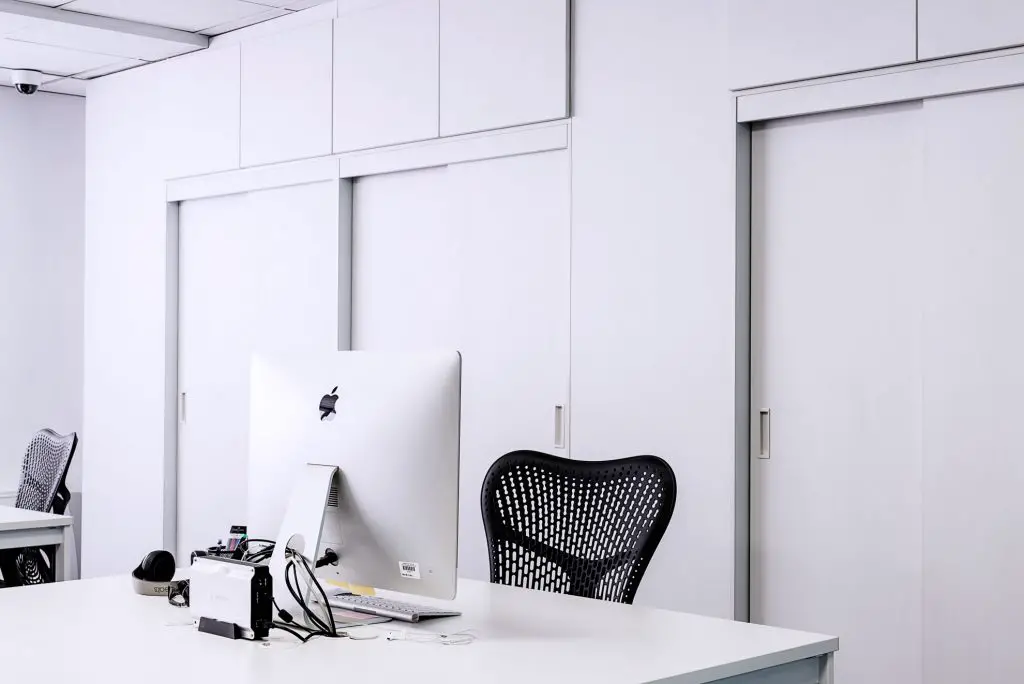
With all the topics about soundproofing sliding doors, this one is probably the most challenging. Soundproofing pocket doors is more difficult than dealing with sturdier doors.
The very reason is the structure of pocket doors. Pocket doors are a type of doors that are encapsulated between two walls. The two walls conceal the door as it slides in and out.
Pocket doors are a great way to maximize space in the house. The door just disappears when it is totally open and only shows up from the wall when it closes.
However, the biggest drawback of this type of door is that it does a poor job of blocking the noise outside. This is the reason why you read this guide. You probably have the same problem and you look for an ultimate solution.
Although soundproofing sliding pocket doors is way more difficult than soundproofing other types of doors, there are techniques you can use to do it. I will be sharing with you some of the methods available to solve your problem.
Because pocket doors are different from any regular doors, soundproofing them may need special and unique sound-deadening materials.
It is a little bit more difficult than dealing with other sturdier sliding doors. But if you really have that courage to do the project on your own, with the right materials, you can absolutely do it.
That said, I suggest that the first thing you should consider is the type of materials you’ll be using in soundproofing a sliding pocket door. Picking the wrong materials could result in total failure.
Before you buy the materials, I suggest that you take correct measurements on the gap you want to fix. In my experience, I found that the size of the gaps determines the thickness of the soundproofing materials needed to put on the gaps.
Applying a thinner sound deadening material will not effectively abate the penetrating noise. Accurate measurement is therefore important. It will not only ensure good results but also maximizes your money and effort you put on the project.
When soundproofing the sliding pocket door, you also need to consider the frame rate. The stronger the door the easier it can be soundproof. I recommend that you use the frame rating of at least 150lbs. This can be enough for soundproofing applications.
Soundproofing Materials for Sliding Pocket Door
There are so many types of sound-deadening materials you can choose for your pocket door soundproofing project. But how do you choose the best for your door?
Well, this can be a tough question. What I recommend is that you need to choose something that you really want. Even this soundproofing guide may not be able to tell you which is which as far as choosing soundproofing materials for pocket doors goes.
Every door is different. But don’t get caught up by perfection. The truth is there is no really one way of doing it. As long as you are able to reduce the disturbing noise, you’ll be okay.
A little research before buying the materials could also tremendously helpful for your success. Ask other people who already have done the project to get new tips and techniques. The information you’ll learn no matter how small it may seem will surely make a difference in your soundproofing project.
Here are the materials you need to soundproof sliding pocket door:
1. Mass Loaded Vinyl
When it comes to soundproofing sliding doors, the Mass Loaded Vinyl (click here to see it on Amazon) is almost always one of the key materials being used. The reason being is that this material has a perfect mass needed for the project. Adding this will surely strengthen the pocket door’s structure.
2. Green Glue
This material is a great sealant that is being used to seal the gaps between the materials. When working with a pocket door, Green Glue (click here to see it on Amazon) will do a very good job of fixing the gaps where the noise can pass through.
3. Resilient Channels
This is another great additional material or just another option as far as soundproofing pocket sliding door goes. It is not only helpful for pocket doors but also for any soundproofing sliding doors projects.
4. Homasote
Homasote (click here to see it on Amazon) is another great material when soundproofing doors and windows. And because it is versatile, you can definitely apply this to your pocket door soundproofing project.
Soundproofing a Pocket Door
There are many techniques you can employ to do this project. But I only recommend some of those in this guide. The following techniques are the ones that I found most effective at least for my personal experience.
Technique #1: Reinforcing the Pocket Door Panel
If you have a pocket door in your house you know that there are gaps all around the door. You can find them probably at the hinges section, at the top, or at the bottom portion. These gaps allow the outside noise to pass through. So the first line of defense should be to seal all these tiny little gaps.
But before applying any further soundproofing strategies, you need to remember that a pocket door is not as sturdy as other sliding doors. What this means is that you need to reinforce the door panel for it to hold the weight of the soundproofing materials you are about to add to it.
It is better if you install a stronger door with a better frame rating. The example of this is the Johnson Hardware Commercial Grade Pocket Door Frame (click here to see this frame on Amazon).
Alternatively, you can also add a solid core wood. I recommend the ½ inch MDF wood for a smooth texture and paint outcome.
The very reason why you need to reinforce the door frame is to make the door stronger and denser. Having this type of door will allow you to apply any type of soundproofing material later on.
If the door is flimsy, you’ll find it difficult to make soundproofing projects on it. Therefore, you won’t be able to eliminate unwanted noise from the outside.
Technique #2: Using a Soundproofing Rubber
After making your pocket door studier, the next step is to seal all the gaps between the frame and the door. This is to make sure that no sound would be able to enter your room.
The material I recommend for this is the Acoustical Caulk (click here to see this product on Amazon). This is a great way to seal all the missed small gaps you made during the installation.
Technique #3: Using a Door Gasket
For optimal results, I highly recommend that you use a door gasket. This one ensures to seal all the gaps above the door and on both sides (jams) of the door. This material is also durable and allows you to enjoy the fruit of the project for a very long period of time.
The great thing about door gaskets is that they perfectly fit into the frame of the door making it effective in soundproofing sliding doors.
The only negative side of choosing the door gasket is the price. You can see that it is a little bit pricey compared to other soundproofing options. But the reason I recommend it is because it is super effective when it comes to sealing tiny gaps in the door.
If you are restrained by your budget, you can go with weatherstripping instead. As mentioned earlier in this guide, weatherstripping is another great soundproofing material you can use for your project.
If you choose this material, make sure you use the Silicone Weatherstripping (click here to see this material on Amazon). This one is more effective and durable than other brands.
Technique #4: Using an Automatic Door Bottom
Soundproofing sliding doors may have several things to remember. One of those is that no matter how effectively you seal all the gaps above and on both door jambs, the bottom portion of the door remains an open passage for the noise to pass through.
This means that you have one remaining job to do. And that is to seal the gap between the door and the floor. If you are a newbie on soundproofing sliding doors, this is a huge challenge for you.
Fortunately, there are simple and effective ways you can do to achieve that sound-abatement goal. The best one is by using an Automatic Door Bottom (click here to see this product on Amazon).
This material seals the gaps between the door and the floor no matter how small. If you want to totally block the noise outside, you might want to try this.
What I like the most about this soundproofing material is that it is easy to install and fits perfectly. You won’t experience any problem when opening and closing the pocket sliding door.
As the door opens, the automated seal raises a bit high to avoid contact with the surface of the floor. And when the door closes, the automated seal drops sealing the gap between the bottom of the door and the surface of the floor.
Using the automated door bottom probably one of the coolest things I’ve ever done with my door. It solved the problem I had almost effortlessly.
Read my detailed article on how to soundproof pocket sliding door here.
On Soundproofing Sliding Pocket Door
I hope that you now can see the difference between soundproofing regular sliding doors and soundproofing a sliding pocket door. The latter requires more effort and dedication and a little bit of technical know-how.
But like any soundproofing projects, working with a sliding pocket door is pretty doable. All you need to have is self-confidence. As long as you have the right materials and the right amount of determination, you’ll go to be successful.
Soundproofing Sliding Doors Wrapped Up
If you read this article from top to bottom, you probably learned that soundproofing sliding doors may have different requirements depending on the type of sliding door you are working on.
Both glass sliding doors and sliding pocket doors are both delicate doors. This means that when working with these doors requires extra care and specialized materials.
But if you follow this guide, there is a high chance that you will be able to achieve your soundproofing goal.
It is my best hope that this post helps you succeed in your soundproofing project. For more questions, feel free to leave a comment below. To learn more about soundproofing, visit my Soundproofing Guide.

